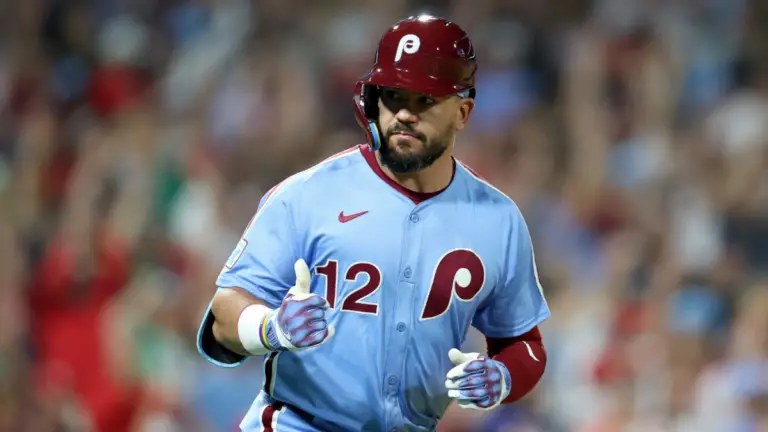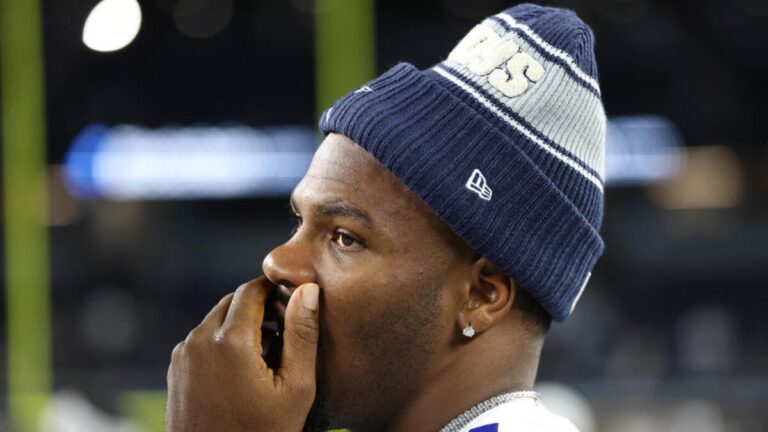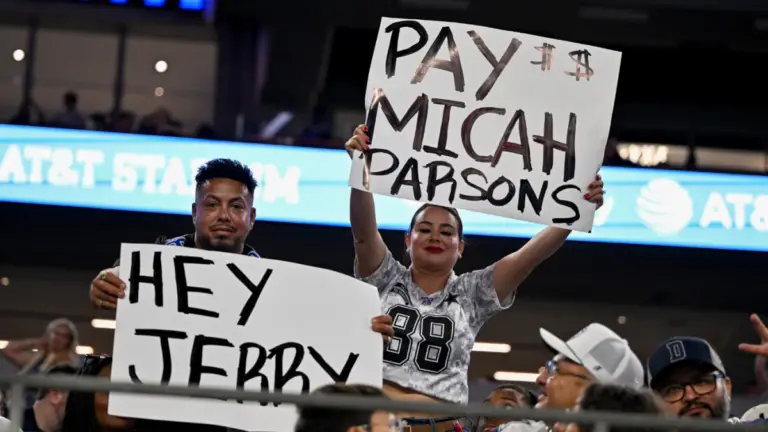
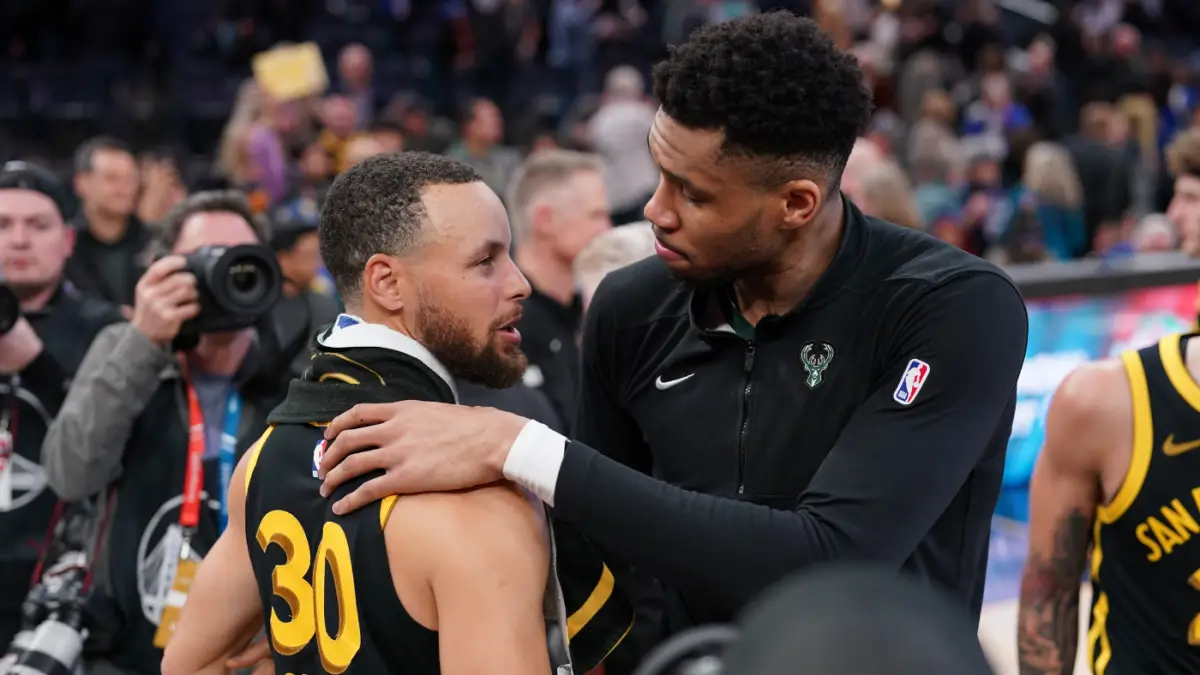
What’s next for Warriors? Stephen Curry’s injury costs them clarity ahead of Giannis Antetokounmpo sweepstakes
What’s next for Warriors? Stephen Curry’s injury costs them clarity ahead of Giannis Antetokounmpo sweepstakes
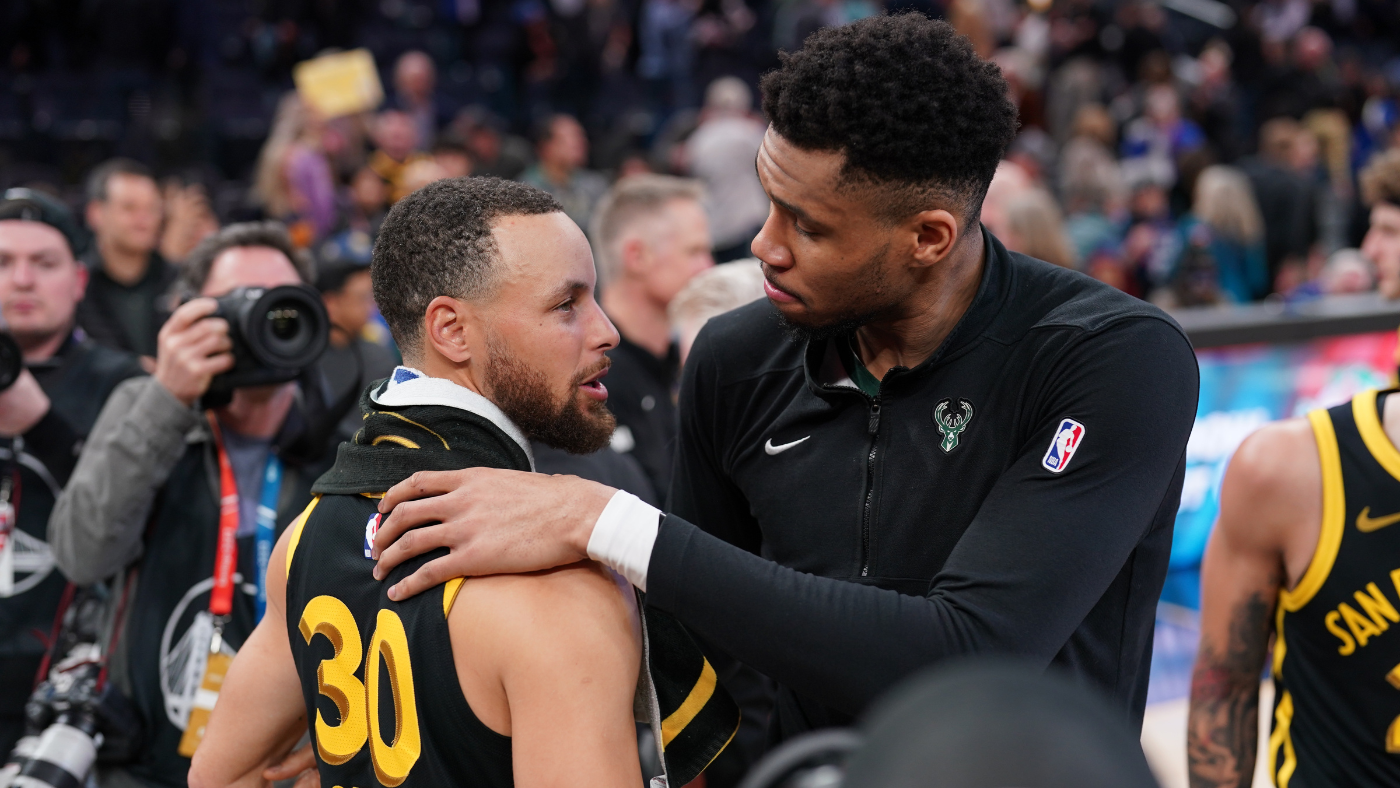
Stephen Curry doesn’t have that many chances left to win a fifth championship. The Golden State Warriors know that. It informed every decision they made during the 2024-25 season. When ESPN’s Shams Charania reported at the trade deadline that the Warriors were “legitimately calling about every All-Star player,” they did so because they understood how precious the end of 37-year-old Curry’s prime really is. It might be decades before Golden State gets another player like this. The organization is all-in on capitalizing now. That’s why they traded for Jimmy Butler.
The on-court benefits were apparent quickly. The Warriors were 25-26 before Butler arrived and closed the season 23-8 with him in the fold. The off-court benefit, though, was that he was cheap. The only first-round pick he cost came in 2025, leaving their future picks unencumbered by the Stepien Rule. Andrew Wiggins was the only core player in the deal. The hope was that Butler alone was enough to lift the Warriors into true championship contention. The unspoken reality was that if they found out quickly enough that he wasn’t, they still had the ammunition to take another swing somewhere.
That’s what makes Curry’s second-round hamstring strain (in their five-game series loss to the Wolves) so devastating for the Warriors. It’s not just a lost chance at that elusive fifth title. It’s a lost chance to figure out how far away it really is. This playoff run should have been a measuring stick. It almost was. If the Warriors had lost Game 7 to the Houston Rockets, that would have been that. They would have known then and there that more help was needed.
But what do you do with a second-round loss like this, in which Curry plays 13 minutes and disappears? Golden State dominated that quarter or so with Curry, but that’s hardly a reliable sample. What does it say about Butler that he couldn’t keep you afloat long enough for Curry to return? Can anything from Butler’s postseason be trusted after the injury he suffered against Houston? What about a supporting cast that really only makes sense in the Curry-Butler context? Is it too early to draw conclusions about Brandin Podziemski’s ability to generate offense in the postseason? Do the signs of life from Jonathan Kuminga warrant a new contract, or perhaps make him a more desirable sign-and-trade chip for someone else? Or did he merely take advantage of a rare opportunity to cook without the chef in the kitchen?
All we can say with any degree of certainty for now is that the 2024-25 Warriors, in a playoff setting, are relatively close to the 2024-25 Rockets, perhaps with a slight advantage. That means next to nothing for 2026 and beyond, though. This is likely the worst that this version of the Rockets is ever going to be. The same can probably be said of the Thunder. These are two of the youngest teams in the NBA. Even if you could compete with them this season, you’d have to get better to keep up next year. The Warriors, in their current construction, are probably getting worse. Kuminga didn’t pan out. And based on his expected salary demands alone, he is probably gone. Podziemski is a valuable player, but the All-Star potential the Warriors saw in him hasn’t yet materialized. Curry is 37. Butler turns 36 before next season. Draymond Green is 35. What’s lost to age probably won’t be replaced by youth. It’s going to have to come externally.
If there’s another Butler-esque deal on the table that brings in a major contributor for a reasonable price? Sure. Take it. Deals like that are rare. There’s a reason it took the Warriors almost a year to find one. More likely, a major deal means cutting into the core. With Kuminga, Kevon Looney and Gary Payton II headed for free agency, there just isn’t that much matching salary to work with here. Outside of Curry, Butler and Green, the Warriors have less than $31 million in salary on the books. Stack all of them and you could maybe target a high-end starter, but $30 million difference-makers are rare and the ones who exist tend not to be available. Perhaps they could get creative with sign-and-trades, but those carry all sorts of CBA-related restrictions. Besides, Steve Kerr’s mantra is “strength in numbers.” He’s not going to want to sacrifice any semblance of depth he has for just anyone.
This is where we have to acknowledge that the best player expected to become available this offseason isn’t just anyone. The Warriors have been linked to Giannis Antetokounmpo since at least May of 2020, when Connor Letourneau of the San Francisco Chronicle reported that, according to a league source, “the Warriors have been preparing for years to make a bid for Antetokounmpo.” It’s been half a decade since then and Antetokounmpo is no less alluring. The fit with Curry, at least on paper, is obvious.
Curry is not Damian Lillard. There’s no obvious reason to fear a fit with Antetokounmpo because they don’t have to build an offense around their pick-and-roll chemistry. Curry is, primarily, an off-ball player. No player has ever had more 3-point gravity than he does. No modern player has more rim gravity than Antetokounmpo. Merely by existing on the court at the same time, they effectively break defenses. The Warriors have spent years trying and failing to simulate even a percentage of what Antetokounmpo might bring them. They spent lottery picks on Kuminga and James Wiseman, desperate to find a vertical spacer or downhill driver who might ease Curry’s burden. Antetokounmpo is the answer.
Now Antetokounmpo finds himself on a Bucks team that is rapidly circling the drain. He is not known to have requested a trade yet, but is, according to ESPN’s Shams Charania, “open-minded about exploring whether his best long-term fit is remaining in Milwaukee or playing elsewhere.”
The Ringer’s Howard Beck said on The Zach Lowe Show that one source he reached out to said “that it’s already just the big cities: One of the L.A. teams or one of the New York teams or maybe Miami, not a big market, but a glamour market, mid-size market.” Reporting from our own Bill Reiter in October painted a similar picture, pegging Miami and Brooklyn as possible preferred destinations. San Francisco would seemingly be in the mix, too.
Could the Warriors offer enough for Giannis?
The answer is closer to “yes” in reality than on paper. Golden State doesn’t have the most to offer. The Warriors could never outbid the Thunder or the Rockets or the Nets or a handful of other teams. Monday’s NBA Draft lottery made things harder. The San Antonio Spurs jumped up to No. 2, giving them another premium asset to deal. In a pure bidding war, the Warriors lose.
But think back to when Anthony Davis, another long-term Warriors target, moved in 2019. He wanted to play with LeBron James, so even though other teams could outbid the Lakers, he wound up in Los Angeles. That is how these things often go. The players have, at a bare minimum, some input. If they’re willing to make things uncomfortable, that input can become decision-making power. If Antetokounmpo had his pick, where do you think he would land?
The Warriors would likely be at least fairly high on that list. He and Curry have a deep mutual respect. When Curry was an All-Star captain in 2018, he drafted Antetokounmpo. When Antetokounmpo was a captain one year later, he returned the favor by taking Curry first. When Curry won the championship in 2022, Antetokounmpo called him the best player in the world. When Curry heard, he responded by saying, “I was thinking the same thing about him last year,” when Antetokounmpo was the reigning champion.
This guarantees nothing, but the James-Davis partnership offers a rare window into the way players often think about these things. Usually, they aren’t meticulously combing through rosters, evaluating a team’s asset base and mapping out their cap situation years in advance. No, normally their priority is finding the best possible teammate in the moment and ideally getting to a cool city. That sounds like Golden State to me.
What would Warriors give up for Giannis?
Well, the short answer is “anything but Curry.” If the Bucks want Podziemski, they get Podziemski. A Kuminga sign-and-trade is tricky from a cap perspective, but almost always doable with high enough stakes. Don’t discount Golden State’s draft picks. They owe a top-20 protected pick in 2030 to the Wizards, but that won’t encumber them much as they could still trade the more valuable protected portion of that pick. All of their other post-2025 draft picks are in play, and you’d probably like to get your hands on as many deep future Warriors picks as you can right now. In 2032, Curry will be 44 and retired. Antetokounmpo will be 37 and maybe done as well.
Those picks have tremendous value and could easily be flipped in beneficial ways for Milwaukee. Don’t want to wait seven years for a top prospect? Great. The Pelicans control Milwaukee’s 2026 pick outright and get their 2027 pick as well if it lands in the top four. Reach out to New Orleans and offer some of that Warriors capital in exchange for the right to tank back much like the Nets did with the Rockets last summer.
Before we go any further, we have to acknowledge a financial reality here. To match money, the Warriors almost have to include Butler, and if by some miracle they didn’t, it would mean including Green. Antetokounmpo will earn more than $54 million next season. Aside from Curry and Butler, every other Warrior on the books for next season is owed a combined $56.8 million. That means they’re either creating a three-headed monster with Curry, Butler and Antetokounmpo that comes with very little depth or they’re giving up Butler months after acquiring him if they want to pursue Antetokounmpo at all.
The Bucks, for a number of reasons, almost certainly would not be interested in Butler or Green. If they’re trading Antetokounmpo, even if they don’t wind up regaining control of any of their picks, they’d probably like to get younger and cheaper. Butler and Green are are old and expensive. Butler has also proven time and time again that he is an enormously difficult personality to have around your locker room when he isn’t happy, and while Green has never changed teams, he’s not exactly known for maintaining organizational harmony. Odds are, neither would be happy in Milwaukee.
However, Butler did sign an extension with the Warriors upon getting traded. He has two years left on his deal and at least doesn’t have to worry about his money. Green is also locked in for multiple years. The Warriors would therefore just need to find an interested party that Butler or Green would deem an acceptable basketball situation. Is that doable? Maybe. Butler just had a stellar few months in Golden State. His value might be higher now than it was with the Heat. Green’s value is so tied to Curry that moving him would probably be a tougher task. There are a handful of teams that would want the best defensive player in the NBA outside of Victor Wembanyama, and his contract is manageable, but without knowing what sort of offensive role he can play outside of Curry’s orbit, his trade value is going to vary wildly from team to team.
The model here, ironically enough, might be the trade Milwaukee made to get Lillard. The Bucks gave the Blazers all of their available draft capital, but that wasn’t enough, so they sent Jrue Holiday as well with the understanding that he could be flipped later for even more. Some version of that would probably be Golden State’s path here: everything of value they could give up, plus Butler or Green, who would then be exchanged for more that could go to Milwaukee.
That deal was structured that way, in part, because the Bucks didn’t want Holiday finding out about negotiations before a deal was finalized. They couldn’t risk fracturing their locker room if he was staying in it. That’s a risk the Warriors would be running here if they shopped Butler or Green to get Antetokounmpo. Could they keep these negotiations secret as the Bucks largely did in 2023? It would probably be a good deal harder. Antetokounmpo is more notable than Lillard, and more teams will pursue him. Leaks would be plentiful. Rivals would love the chance to destabilize Golden State. If the Warriors sense an acquisition is unlikely for any reason, that might be enough to scare them out of the chase.
If they pull it off, would it be worth it?
That’s the hardest question here to answer. The new CBA has placed such an overwhelming emphasis on depth that the Warriors would be operating at something of a disadvantage. Superteams aren’t in vogue right now. The Lakers got bounced by the Timberwolves in five. The Clippers lost to the Nuggets because their defensive-minded role players didn’t need to be guarded on the perimeter. Heck, the Warriors struggled so much against the Rockets because they couldn’t figure out who to play next to Curry, Green and Butler, while Houston’s backup center, Steven Adams, nearly bullied them out of the playoffs.
In the best-case scenario, trading for Antetokounmpo would hard cap the Warriors at the second apron. Maybe then they could keep a few handy supporting pieces in the version of the trade that includes Butler’s bigger salary rather than Green’s smaller one. Buddy Hield’s shooting would be nice. Maybe they could re-sign Payton. Holding onto Moses Moody would help, but he’s one of the younger Warriors that Milwaukee might actually want. But these are all players who, for some reason or another, struggled at points in the postseason. They aren’t the obvious plug-and-play role players teams like Oklahoma City or Minnesota have. They would play major minutes with role players opponents don’t guard, or defensive liabilities that can get attacked.
If you believe in the axiom that the regular season is about strengths and the postseason is about weaknesses, the Warriors would be exploitable at the highest levels. This isn’t 2016. They wouldn’t have four All-Stars. They wouldn’t have Andre Iguodala and Shaun Livingston coming off of their bench. They’d be similarly powerful as minimum-salary free-agency recruiters, but the resuscitated Lakers would provide more meaningful competition on that front than any team last decade did. The buyout market would be off-limits if they wound up above the first apron, a near certainty. Golden State would have to be nearly perfect on the margins.
The Warriors have gone star-hunting before, but never like this. They’ve never needed to grapple with the debate between star power and an entire roster. It creates an unsolvable dissonance between two of their core organizational principles. We’ve covered Kerr’s “strength in numbers” philosophy. He trusts a lot of players and uses deep rotations even late in the playoffs. But at times of crisis, the Joe Lacob-led front office has always aimed high. They didn’t draft easy fits like Tyrese Haliburton or Franz Wagner when they were at their turn-of-the-decade low point. They took home run-talent swings on Wiseman and Kuminga. They didn’t re-sign Harrison Barnes and keep Andrew Bogut when they lost the 2016 NBA Finals. They signed Kevin Durant. They didn’t trade for a marginal upgrade like Nikola Vučević at this year’s deadline. They traded for a star in Butler.
Now they’re at another crossroads, and they’re approaching it blind. They have Curry under contract for two more years. Same with Butler and Green. And they have no idea whether this version of their team was going to survive the four-round playoff crucible or even come close. A serious pursuit of Antetokounmpo would mean, in effect, breaking up the team they have now, and they don’t even know if the team they have now needs to be broken up. Losing Curry lost them the chance to answer that question. Now they’ll have to make a guess and hope for the best.

